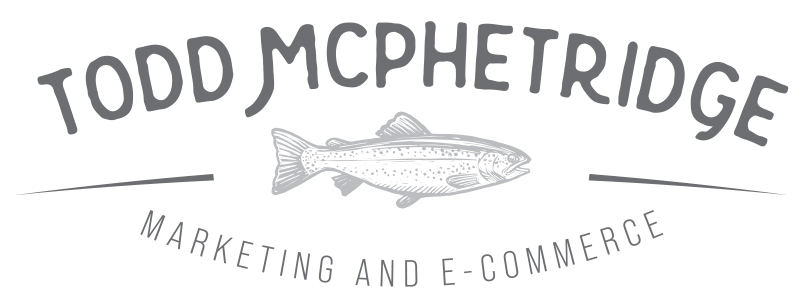Digital Marketing
Most teams try to scale non-brand by adding keywords and hoping the algorithm finds the right people. That approach burns cash. Real scale comes from a tight demand capture strategy that focuses on problem queries, honest comparison terms, and solution pages built for the searcher’s intent. This guide shows growth teams how to turn non brand search into predictable revenue with clear themes, clean structure, and landing experiences that convert. If you are evaluating a senior digital marketing consultant, this is the blueprint they should walk you through on day one.
Why non-brand stalls for most teams
- Intent drift: broad keywords pull in research queries that never buy, while high intent terms are underfunded.
- Landing mismatch: searchers see a PDP that does not answer the question, or a home page that forces them to start over.
- Query cannibalization: exact and broad versions fight each other, so budget flows to the cheapest clicks, not the best buyers.
- Thin measurement: decisions rely on platform ROAS without cohort checks, so short term wins hide poor payback.
The three-theme model for scale
Organize non-brand into a simple structure. These themes map directly to intent and landing type.
- Problem queries: the shopper describes a job or pain. Your ad must name the problem and route to a short solution page that teaches and sells.
- Comparison terms: the shopper weighs options. Your ad must promise an honest comparison and land on a table that answers tradeoffs in plain language.
- Solution terms: the shopper names a product type with a qualifier such as size, material, or use case. Route to a curated collection or a high quality PDP with price justification near the CTA.
Build query sets that survive real budgets
Use themes to write keyword lists that scale without drowning in noise. Start exact and phrase. Add controlled broad only after the theme hits your payback rule.
Problem queries
- how to keep [item] from [problem]
- fix [pain point] at home
- best way to [job to be done]
- alternative to [annoying old method]
Comparison terms
- [product type] vs [product type]
- [brand] vs [brand]
- [product type] reviews
- [product type] worth it
Solution terms
- [product type] for [use case]
- [size or capacity] [product type]
- [material] [product type]
- best [product type] for [audience]
Write ads that preview the answer
Ad copy should read like a promise and a preview. Match the headline to the query theme and summarize what the landing will show.
- Problem headline: Stop [pain] in [timeframe].
- Comparison headline: [Product] vs [Alt]: Real Tradeoffs.
- Solution headline: Best [type] for [use case] with [key attribute].
Use two short description lines. Line one lists an outcome and a proof point. Line two directs the next step on page. Keep it practical and specific.
Route clicks to the correct page type
Non-brand wins when the destination pays off the query immediately. Use this routing map.
| Query Theme | Best Landing | Must Include | Primary Metric |
|---|---|---|---|
| Problem | Solution page | Three-step how it works, short proof, recommended bundle, CTA blocks | Qualified sessions and add to cart |
| Comparison | Comparison page | Table with honest tradeoffs, price context, reviews snippet, CTA tiles per option | Add to cart from comparison |
| Solution | Curated collection or PDP | Filter by key attribute, price justification near CTA, delivery and returns summary | Conversion rate and AOV |
How to build a high converting solution page
Think of the solution page as a compact buying guide with a simple offer. This is the most common gap in non-brand programs.
- Top section: one sentence that names the job and the outcome. Add a three-step section that explains how your product solves it.
- Proof block: a before and after image or a short clip, plus one measurable claim.
- Recommendation: highlight one hero SKU and one job-based bundle. State when to choose each.
- Objections handled: delivery date range, returns summary, and a short price justification block.
- CTA layout: add to cart for the hero and a link to the detailed PDP. Keep both above the fold on mobile.
Comparison pages that searchers trust
Comparison intent converts when you are honest. The table should help the buyer pick, not push them through a maze.
- Column choices: your hero, your alternative, and a popular competitor. If a competitor is required, show fair tradeoffs.
- Rows to include: price, key attribute, setup time, warranty, best for, and one measured performance stat.
- CTA logic: a tile under each column with the right landing. Use the same button language across columns to keep trust high.
Campaign structure that protects intent
Use a layered structure so budgets flow to high intent first. Keep names simple and readable by anyone on the team.
- Exact themes: separate campaigns for problem, comparison, and solution. Use tight ad groups with clear negatives. Judge success by cohort payback and add to cart CPA.
- Phrase support: mirror each exact campaign with phrase match for coverage. Maintain negative lists to protect exact.
- Broad tests: one controlled campaign per theme with daily caps. Only run after exact and phrase hit your payback target for two weeks.
- Shopping alignment: send Shopping clicks for the same families to the same page types. Use labels to push hero SKUs for the solution theme.
Negatives that keep money out of the tail
Write a standing negative list for each theme. Update weekly with new clutter you discover in search terms.
- Problem theme negatives: free, DIY only, joke terms, school reports, unrelated parts.
- Comparison theme negatives: coupon, promo code, used, manual PDF, unrelated brand families.
- Solution theme negatives: wholesale, repair service, brand names you cannot ship against, off-size modifiers you do not offer.
Measurement that finance will trust
Non-brand expansion should be judged with cash in mind. Blend platform signals with cohort reads.
- Platform reads: search term quality, CTR, marginal CPA. Use these to prune quickly.
- Analytics reads: landing family conversion, AOV, and contribution per order. Report by theme, not only by campaign name.
- Cohort reads: day 30 and day 60 revenue per acquired customer by theme to confirm payback. If comparison converts slower but brings higher value customers, the plan should fund it.
Playbook to launch or reset non-brand in two weeks
- Week 1: map the themes, write the keyword lists, and build a solution page and a comparison page. Add price justification to hero PDPs. Publish three ad variants per theme with matching copy.
- Week 2: turn on exact and phrase for each theme. Pause old broad sets. Align Shopping labels for the same families. Start with modest budgets and daily checks on search terms and landing reads. Hold broad tests until the end of week two.
Examples by category
Home goods
- Problem: “stained sofa fix” routes to a solution page with a short video and a care bundle recommendation.
- Comparison: “steam cleaner vs upholstery spray” routes to a table showing setup time, surface restrictions, and cost per use.
- Solution: “pet safe upholstery cleaner” routes to a PDP with materials, safety certification, and delivery window near the CTA.
Beauty
- Problem: “reduce redness fast” routes to a solution page that explains ingredients and shows before and after images.
- Comparison: “serum vs cream for redness” routes to a table with use cases and layer order.
- Solution: “vitamin c serum for sensitive skin” routes to a curated collection that preselects gentle formulas.
Fitness
- Problem: “desk back pain fix” routes to a solution page with stretches and a bundle of lumbar support tools.
- Comparison: “foam roller vs massage gun” routes to a table of intensity, noise, and best for.
- Solution: “compact adjustable dumbbells” routes to a PDP with dimension photos and a storage stand add-on.
Copy rules that keep intent honest
- Name the job: the headline should repeat the searcher’s words or the closest plain version.
- Show the math: include cost per use, setup time, or durability as a number rather than a claim.
- Limit choices: present two clear options on solution and comparison pages so the buyer moves forward.
- Trust stack early: delivery window and returns summary should appear in the first screen on mobile.
Budget rules for scale without waste
- Start with a ladder: fund exact themes first. Move to phrase after exact meets cohort payback. Test broad last with daily caps and strict holdouts.
- Use marginal reads: raise budget in five percent steps. If marginal CPA rises more than ten percent without better search terms, stop climbing.
- Coordinate with Shopping: if Shopping claims more conversions for the same family, keep the non-brand theme but reduce bids until both lanes meet payback goals.
Common failure modes and fixes
- All roads lead to PDP: solution and comparison intent stalled at generic product pages. Fix by adding a true solution page and a fair comparison table.
- Broad expansion too early: budgets pushed into noise. Fix by pausing broad sets and relaunching with negative lists after exact wins.
- Thin proof: claims without numbers. Fix by adding one measured stat and one short video on solution pages.
- Query cannibalization: multiple match types compete. Fix by separating themes and adding negatives across campaigns.
Team roles and cadence
- Search lead: owns themes, negatives, and budget moves. Publishes a weekly decision memo.
- Content or UX: builds solution and comparison pages and keeps price justification modules current.
- Analytics: reports conversion by landing family and cohort payback by theme. Flags saturation.
- Founder or GM: approves reallocation only when the memo shows payback and marginal CPA stability.
Weekly scorecard
- Spend and new customers by theme: problem, comparison, solution.
- Search term quality and percent of clicks on approved patterns.
- Landing conversion by family and AOV.
- Day 30 and day 60 revenue per customer by theme.
- Marginal CPA trend after budget changes.
Ask for an Expansion Map
If you want a non-brand program that scales without guesswork, ask for an expansion map. I will define query themes, write keyword sets for each, and design solution and comparison pages that pay off the promise. You will receive a clean structure for non brand search, a practical demand capture strategy, and a rollout plan for search expansion with payback rules finance will approve. Ideal for teams that want senior guidance without adding agency layers.

















